Palau Survey Analysis of Records Project
June 24 - July 4, 2013, Airai, Palau
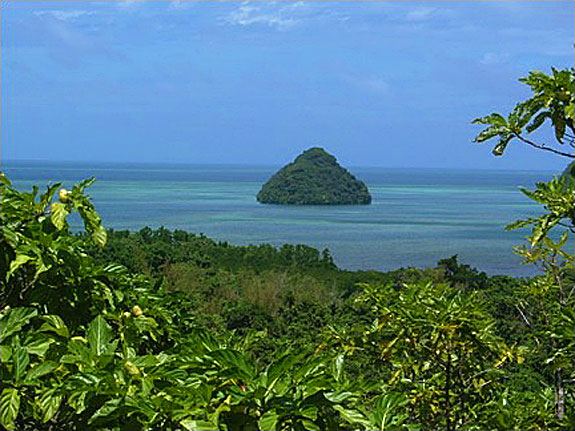
Island Culture Archival Support (ICAS) was invited by the Director of Archives, Naomi Ngirakamerang, in 2011 to help conduct the Palau Survey Analysis of Records Project which was to survey over twenty years backlog of unprocessed records of the Republic of Palau. The goal of the project was to perform archival appraisal techniques to ensure the capture of valuable records and the disposition of unwanted ones. Additionally, ICAS was asked to give archival appraisal and accessioning training to the small staff that consisted of three people.
In late 2011 ICAS participated in the GlobalGiving fund-raising challenge to raise money for the project. GlobalGiving is a charity fund-raising Website that gives social entrepreneurs and non-profits from anywhere in the world a chance to raise the money that they need for their projects. We raised US$3871.50 during the month-long challenge. Besides travel arrangements, the money was used to procure and ship archival supplies to the Bureau of Palau National Archives. This consisted mostly of archival boxes. Over a hundred boxes were shipped to the archives and will likely be used in the appraisal/accession stage.
The Bureau of Palau National Archives office is a two-story building which houses the staff in Airai state and is about a fifteen-minute drive from the town of Koror. An actual repository does not exist at the moment. In fact, the records are kept in several places throughout Koror such as: the old office, a warehouse, inside forty-foot containers, and in an abandon school right behind the archives office. This makes it very difficult for the staff to process the records. Also, creating agencies are becoming impatient because they do not know where to send their records. Nevertheless, there is a plan to appraise the records where they are and bring the most valuable ones to the office building for processing, and then stored in empty containers on the site until a permanent building it constructed. Needless to say, a new National Archives building is badly needed.
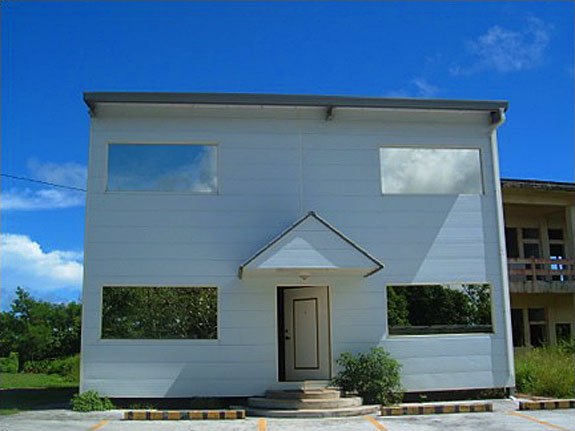
I spent the early part of the week getting used to the environment and the situation within the archives office. It was quite evident that they are in the early stages of developing their national archives- a daunting task, especially with such a small staff. Thus, one of my first suggestions was to draft a collection policy, as well as a step-by-step accessioning and processing guideline. This did not take too long, as I had written these documents during a previous project in Vanuatu when they were starting their national archives a few years ago. Nevertheless, the staff of the Palau National Archives will still need to review the policy and mold it to their own specification. They can also present it to the Archives Council (Members of this council are currently being appointed and/or drafted) who then can provide some valuable feedback.
Also, during this early part of the week Naomi and I made a couple of visits around the island. The first was a trip to the old President’s office in Meyuns to look over a room full of important records pertaining to the President’s Office. The office wanted to use the room and needed for Naomi to come and see to their removal. But where could they be transferred? It was decided that the records would be transferred and stored at the Civic Center that belongs to the Bureau of Arts and Culture. The records were moved that day. The second visit was to the Capitol Buildings in Melekeok state. This is about a forty-minute scenic drive through intense jungle to the middle of nowhere. It is definitely worth the drive as the buildings are quite impressive, especially as it rises out of the jungle like a temple you see in an Indiana Jones movie. Plus, on a plot of land near the capitol is where the future site of the National Archives building will be. In fact, while we were here we met with Judy Dean, Grants Coordinator in the Office of the President, to discuss grant opportunities for the archives, as well as the construction of the new National Archives building.
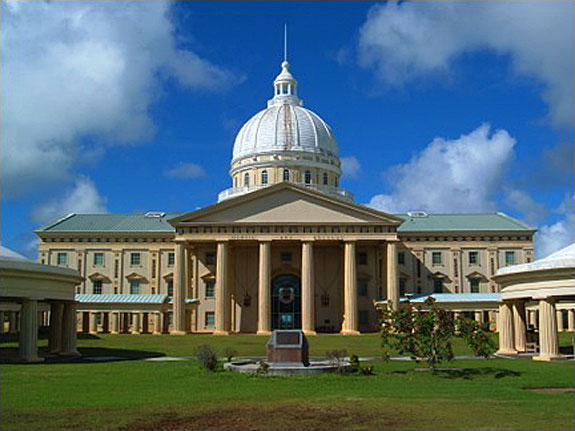
On a stormy Wednesday morning Baklai Temengil, Minister of Culture, and Judy Dean paid a visit to the archives’ office to meet with Naomi and Brian Lakobong (Records Manager) and me to discuss a plan for the development of the Palau National Archives. The group decided on people with unique backgrounds who they felt would make good additions to the Archive Council. Judy also mentioned that it would be a good idea to some how tie in Palau’s 20th Anniversary of Independence with the construction of the National Archives next year. This is a good idea and I noted that Vanuatu did something very similar. They also agreed that they would need a job description for a National Archivist position. Thus, I got to work on this after the meeting and had one completed for review and revision the next day. The Archive Council will eventually make the final revision.
Later in the week the staff and I paid a visit to a few of the areas where the records are being housed. We traveled to a couple of containers scattered around Koror, as well as the old archives office near the Palau National Museum. The office was crowded with boxes of records. However, upon further inspection (and it is comforting to note) many of these boxes can be discarded, as they are full of library books, obsolete computer equipment, and records of little value. The staff was definitely pleased to hear that. Finally, we then went to a warehouse in Koror where some the archives’ records were being stored on the second floor of the building. I quickly got the feeling that these records have been stored here for quite some time, as the boxes were covered with dirt and dust. Thank God that the records are safe in the boxes. Nevertheless, we were able to look through many boxes and I was able to provide some appraisal tips. Hopefully, these boxes will be transferred to the office in Airai as soon as possible for processing. The environment in the warehouse is not suitable for staff to work. It is too hot, dark, and dusty; even the floorboards feel as if they can collapse at any moment!
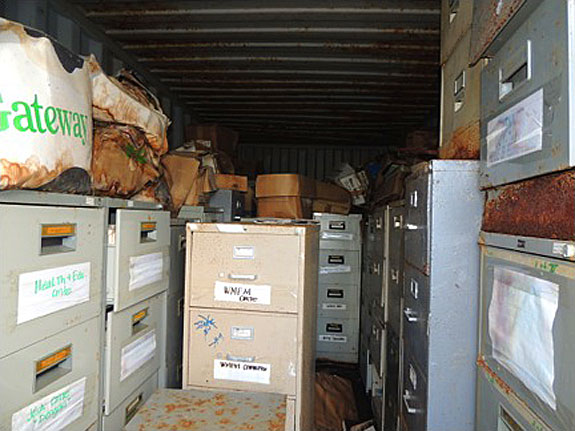
Early the following week I drafted a Preservation Policy for the archives. The mission of this policy is to provide staff and users of the Bureau of Palau National Archives with guidelines and directions to assist in the long-term preservation of its archival collections. The document includes such headings as: policy statement, roles and responsibilities, conservation, access, and exhibition and loans. The archives’ staff will need to review this policy and make changes that will fit their specific needs. Additionally, the Archives Council may have input regarding this policy once it is shared with them.
Naomi and I met with Rose Ongalibang, Clerk of Court, of the Palau Supreme Court. Her office is in Koror. Rose has been wanting to meet with Naomi to see how far along the National Archives has come, and when she can expect to begin sending records. She explained that her office is having trouble finding space to store their documents. In fact, many ministries have the same dilemma of running out of space, or are unsure as to where to send their records. This could definitely be used as another reason to expedite the building of a National Archives building. Be that as it may, the meeting with Rose was quite interesting. She told us about the digitization of court records project (especially land file cases) that her staff has recently undertaken. Rose also mentioned that she wanted to digitize the plethora of audiotapes her office contains, but was not sure as to what kind of equipment she needed to achieve this. I mentioned a couple examples, and would follow up with her at a later date.
The last couple of days were quite busy performing a variety of tasks at the archive’s office. One of the more important tasks was that I rewrote the Pacific Islands Preservation Manual that was originally written for the National Archives Solomon Islands. This manual serves as a guiding document on all aspects of preserving paper documents appropriate to cultural heritage organizations in the Pacific Islands. It is divided into eight key sections: Introduction, Ideas to Think about First, Low Cost Climate Control, Paper Storage Practices, Planning Digital Projects, Handling Mold Outbreaks, Handling Pest Infestations, Forms, and Appendix. The manual is a dynamic document and changes will be made as the need arises.
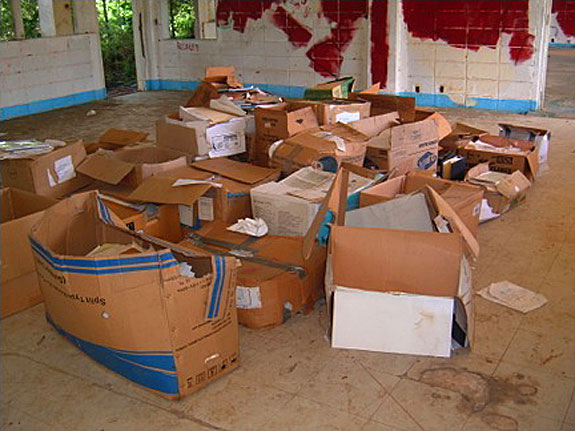
Additionally, during these last days I was able to do some hands-on accessioning training. I created an Accession Form for staff to use as they go through the boxes. The form will allow them to quickly write down information that will help them process the box at a later date. We started with the boxes that were already deposited at the abandoned school behind the archives office. During this time we were also able to do some appraisal work and found that a large percentage of the boxes could be discarded. Many of them contained books that could be set-aside for a librarian from the National Library to come and review them and, perhaps, add to their collection. If a book is not wanted, it can certainly be discarded. Other boxes contained obsolete computer equipment, computer accessories, and manuals which the archives has no use. These definitely made our job a little easier, and we were able to clear out about twenty-five percent of the boxes.
Overall, the project went very well, as we accomplished quite a bit within the two weeks. Although there is much work to be done, the future looks bright for the Bureau of Palau National Archives. Several people have expressed interest to be part of the Archival Council. Today, this group comes from many different backgrounds with the common interest of preserving the nation’s memory. Also, the staff is growing too. Currently there are four employees with a couple of recruitments to be added later this year. And finally, perhaps, most importantly, the Ministry of Community and Cultural Affairs is providing much needed support to the archives. In fact, they are moving forward with the plans to build a new Archives building near the capitol building in Melekeok, and the search for funding this endeavor is currently underway. This is a huge step towards the safekeeping of their national heritage.
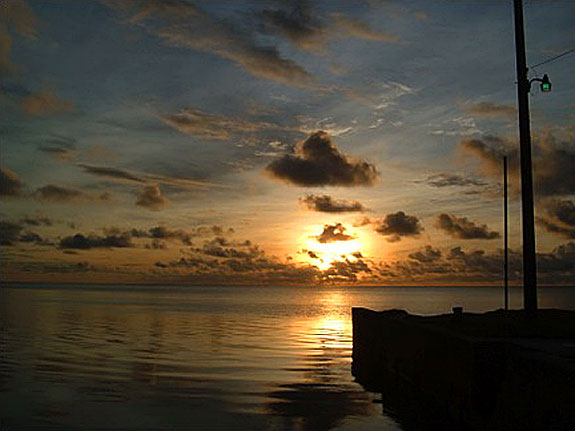
With sincere gratitude Island Culture Archival Support would like to give a hearty thanks to all those who supported this project, as well as the staff of the Bureau of Palau National Archives who truly appreciated our help. We look forward to continuing the relationship in the future!
